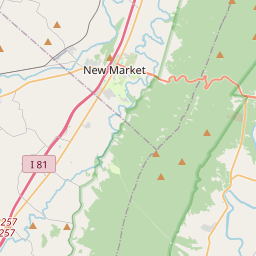Shenandoah National Park
Historical marker location:






Skyline Drive
1872: Yellowstone National Park is established as the first national park in the United States and widely recognized as the first national park in the world.
1890: Yosemite National Park is established in California, protecting its iconic landscapes and natural wonders.
1916: The National Park Service (NPS) is created as a federal agency responsible for managing and preserving national parks. Stephen Mather becomes the first director of the NPS.
1919: Grand Canyon National Park is established in Arizona, safeguarding its immense and awe-inspiring canyon.
1926: Great Smoky Mountains National Park is established, becoming the most visited national park in the United States.
1933: President Franklin D. Roosevelt establishes the Civilian Conservation Corps (CCC) as part of his New Deal program. The CCC plays a crucial role in the development and conservation of national parks, employing thousands of young men in projects such as trail construction, reforestation, and infrastructure improvements.
1964: The Wilderness Act is passed, protecting designated wilderness areas within national parks and other public lands, ensuring their preservation in their natural state.
1970: The National Environmental Policy Act (NEPA) is signed into law, mandating environmental impact assessments for federal projects, including those within national parks.
1980: The Alaska National Interest Lands Conservation Act is passed, expanding the national park system and adding significant areas of land in Alaska, including the establishment of Gates of the Arctic National Park and Preserve.
2009: President Barack Obama signs the Omnibus Public Land Management Act into law, designating several new national parks and expanding existing ones, such as Joshua Tree National Park and Zion National Park.
Present: The U.S. National Park system has grown to include over 60 designated national parks, as well as national monuments, preserves, seashores, and historic sites. These protected areas attract millions of visitors each year and serve as vital conservation areas for biodiversity, natural wonders, cultural heritage, and outdoor recreation.
The establishment and continued expansion of the U.S. National Parks reflect a commitment to preserving and sharing the country's unique natural and cultural treasures for future generations.
Virginia played a significant role in the American Civil War. It was the site of many major battles, including the Battle of Bull Run, the Battle of Fredericksburg, and the Battle of Appomattox Court House, where General Robert E. Lee surrendered to General Ulysses S. Grant.
During the American Revolution, Page County played a significant role in the fight for independence. Many local residents joined the Continental Army and fought in key battles, such as the Battle of Yorktown. The county also saw its share of conflict during the Civil War, as it was strategically located on the northern part of the Shenandoah Valley. Confederate General Stonewall Jackson marched through Page County during his famous campaign in 1862.
The 19th century saw the county transform from an agricultural community to a center of industry, with the arrival of the railroad in the 1850s. Lumber mills and tanneries flourished, taking advantage of the region's abundant natural resources. The rise of industrialization brought economic growth, attracting settlers and spurring the development of towns such as Luray, the county seat.
Today, Page County is known for its stunning natural beauty and outdoor recreational opportunities. It is home to the Shenandoah National Park, which encompasses a section of the Blue Ridge Mountains. Tourists flock to the county to enjoy activities such as hiking, fishing, and exploring the famous Luray Caverns, one of the largest cavern systems in the United States. With its rich history and breathtaking landscapes, Page County continues to captivate visitors and serve as a reminder of Virginia's past.
Page County Timeline
This timeline provides a concise overview of the key events in the history of Page County, Virginia.
- 1738: Page County, VA is established as part of Orange County
- 1831: Page County becomes an independent county
- 1862: Page County experiences significant destruction and casualties during the American Civil War
- 1878: The first railroad, the Shenandoah Valley Railroad, is completed in Page County
- 1927: Construction of the Shenandoah National Park begins, impacting parts of Page County
- 1935: Shenandoah National Park is officially dedicated, attracting tourists and boosting the local economy
- 1993: A flood in Page County causes extensive damage to homes, businesses, and infrastructure